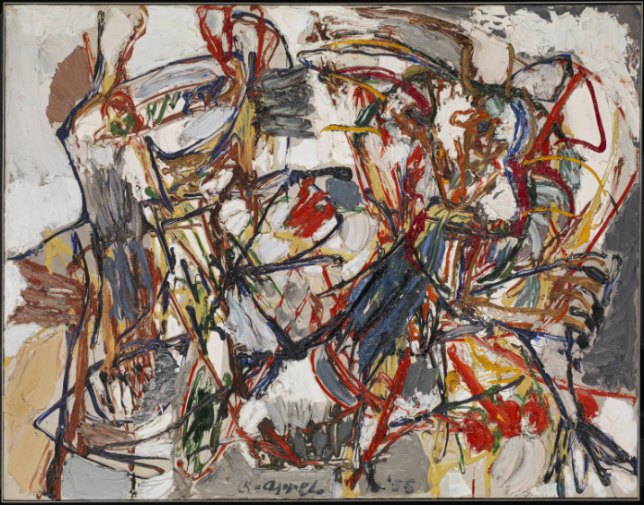
All About the CoBrA Movement and Our Favorite Works
CoBrA (CO for Copenhagen, BR for Brussels and A for Amsterdam) is an artistic movement that advocates a return to natural primitivism in order to “deculture” art. The movement was created on November 8, 1948 at the Café Notre-Dame in Paris. It gathers painters like Karel Appel, Constant Anton, Corneille alias Guillaume Cornelis and Asger Jorn, but also poets like Christian Dotremont and Joseph Noiret. With Artsper, discover the history of this singular movement, which proposed a different future in the struggle between figuration and abstraction.
The birth of CoBrA
At the source of this movement, we have Asger Jorn, a figure of Danish abstract Surrealism and Christian Dotremont, a Belgian poet and painter who no longer recognized himself in the French surrealist movement. It should be noted that before CoBrA, another similar movement was created in Amsterdam: the Dutch Experimental Group.

CoBrA is named after the three cities in which these artists lived: Copenhagen, Brussels and Amsterdam. This collective adventure was definitely launched in Paris, in a café, on November 8, 1948.
The poet Christian Dotremont laid the foundations of this movement, open to all and non-dogmatic. According to him, it is “an experimental organic collaboration that avoids all sterile and dogmatic theory. We found that our ways of living, of working, of feeling were common; we agree on the practical level and we refuse to lock ourselves into an artificial theory”.

A growing movement
In the years following its creation, CoBrA became more and more popular. The pace quickened and many exhibitions were organized between Copenhagen, Brussels and Amsterdam. A new magazine was also created: CoBrA. Although the movement was not born in Paris, it was there that it gained the most momentum in the 1950s. The artists Karel Appel, Constant and Corneille moved there.

A brief movement, one that has left a lasting mark on the history of art
CoBrA’s success was as rapid as its departure and the movement dissolved three years after its creation. Indeed, the geographical distance of the artists, but also the illness of Asger Jorn and then that of Christian Dotremont put an end to this experiment. In October 1951, the last issue of CoBrA was published, which marked the definitive end of the movement.

Yet its influence on the art world still resonates today. The search for spontaneous art, free of cultural norms, has inspired subsequent generations of artists. Despite its short-lived existence, CoBrA is considered one of the main groups of the post-war avant-garde. Its international approach and revolutionary aspect are still perceptible in many later movements, such as street art.

About Artsper
Founded in 2013, Artsper is an online marketplace for contemporary art. Partnering with 1,800 professional art galleries around the world, it makes discovering and acquiring art accessible to all.
Learn more













